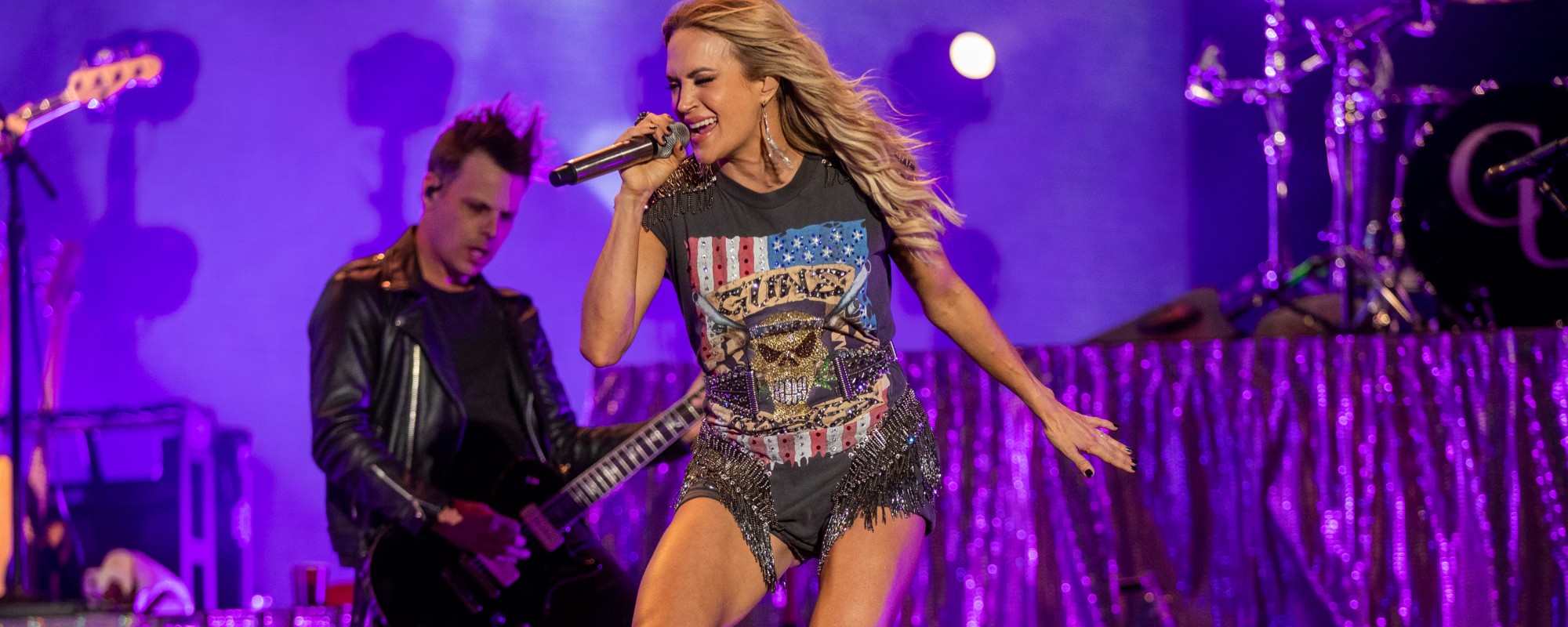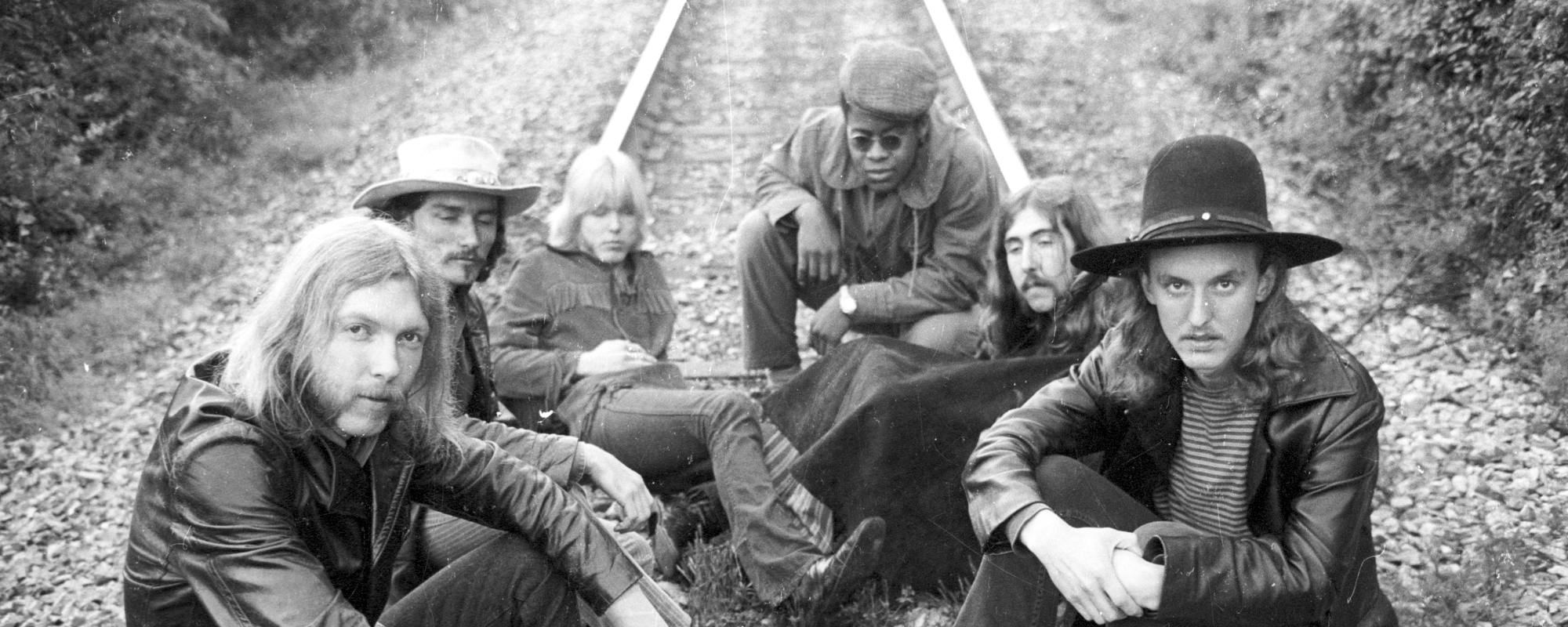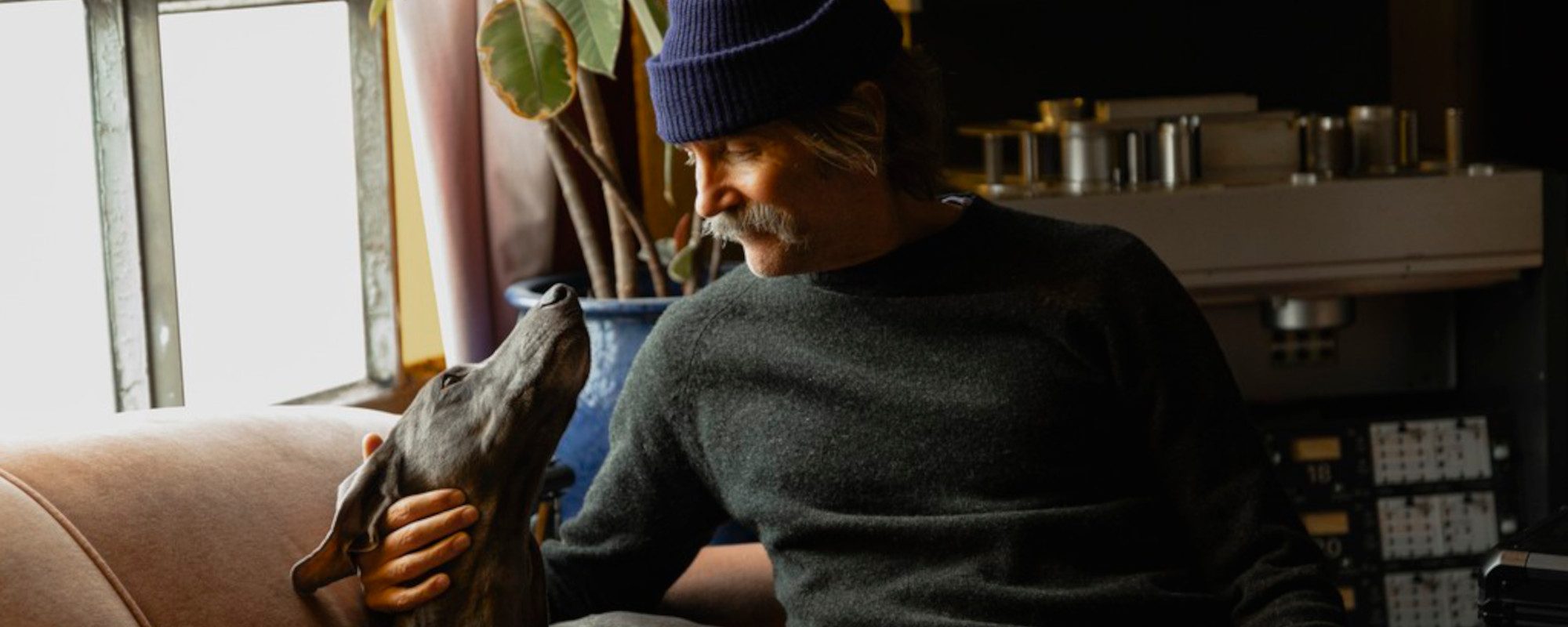“All the mysteries of life come in A minor,” Suzanne Vega said, curled up on a couch in Hollywood.
Videos by American Songwriter
It was a statement she first made to the guys in her band who were urging her to use more chords in her songs. Not wanting to “antagonize” them, she’s been working to stretch her songs lately, harmonically and melodically, despite her faith in the omnipotence of A minor. It’s a struggle that she’s come up against frequently, wanting to write the songs that move her, that express the mysteries of life as she sees it, but still wanting to please other people. “I’d like to be a poet,” she said with a smile, “as long as I still get to mingle in society.”
When she was on tour in Texas, she shocked a record company executive by telling her she wanted to go shopping. “I’m so glad you’re a regular girl!” the lady said happily. From Suzanne’s sometimes sombre image and serious songs, people wrongly assume she doesn’t indulge in life’s lighter pleasures. She admitted to drinking a milkshake right before walking over, and even to eating meat on occasion. “I have a reputation for being pacifistic, vegetarian, Buddhist, and frail,” she said, smiling, “and it’s not like that at all.”
She wanted to be an artist since she was a kid, and studied dance at New York’s High School for the Performing Arts. She soon realized, though, that it was the music and not the movement that mattered most to her, and refocused her energies on being a musician. “I started to realize it was the music that made me want to dance,” she said. “The whole day depended on what the pianist was playing. And I got along with the guys who played piano better than anyone. All my instincts were moving me towards music, even though all my training was in dance. When I was 17 I gave up dance for good.”
From the very beginning, songwriting was not something she took lightly, spending three years writing her first song. She was inspired by artists like Dylan, Joni Mitchell and Joan Baez, both by their music and by the spirit they represented. “These people had a very mystic significance to society. It wasn’t that they were just pop stars. They had an almost religious responsibility. I wanted to be one of these people who had that responsibility. I wanted to join them.”
Her first effort in that direction was written for her brother Matthew and called “Brother Mine,” and began with the line “Sonny boy, you need new sneakers, I guess we’d better go into town and get them Friday night.” She taught herself to play the guitar by learning the chords to songs in sixties songbooks, such as ‘The Girl From Ipanema’.
But when people asked her to sing out loud, she would shrink with terror, an experience that almost kept her from music permanently. “I just wilted. ‘Sing out loud, are you crazy?’ I was very shy and with- drawn. I couldn’t do it. These big guys with their big stomachs singing, ‘Barbara Allen.’ I wasn’t into it.”
But she couldn’t deny the thrill she felt singing into a microphone for the first time, an experience she described as “intoxicating.” She realized that she could sing as softly as she liked and still be heard, and it was a style of delivery that suited her songs. After a few years of failing to get any gigs, in time she fell in with the crowd at Folk City in New York’s Greenwich Village and began performing regularly.
Hearing Lou Reed transformed her ideas about Songwriting: “I started feeling I could be experimental. You could write a song with no chorus or melody. All the restraints were off.” Besides writing songs, she spent a lot of time thinking about her image, and devoutly documenting the minutiae of her performances. “I had this little notebook where I would enter in where I played,” she recalled, “the name of the gig, the songs I played, how I did my hair, what I was wearing, how many people were in the audience, what the response was, how much money I made. I had a mailing list, and I would design the flyers. And I liked all of that, all the business-like aspects of that.”
In time she realized that music mattered more than all other concerns and she devoted all of her energy to singing and songwriting. She sang her songs in a gentle, unforced manner, wanting to capture the easy spirit of children spontaneously making up songs. She released her first album in 1985, called Suzanne Vega. It was one of the most warmly received records of that year, featuring powerful, poetic songs like ‘Marlene On The Wall’ and ‘Freeze Tag’ and pristine, acoustic-based production. The sound of the album was gently wrapped around the voice and guitar, warmly and elegantly supporting the songs without overwhelming them. It wasn’t, however, the sound that she had in mind, as she explains in the following conversation.
Though much critical attention was garnered on her first album, it was a song from her second album called ‘Luka’ that really introduced her to the world. She had written it years before but didn’t feel it was ready to record. A dark song with a light, even happy melody, ‘Luka’ managed to touch on child abuse in the gentlest way possible, written from the perspective of a child who has learned to not say too much. Like one of Randy Newman’s character songs, it’s powerful for what is left unsaid. The song became a Top Five hit and Suzanne an artist known the world over.
Having such enormous commercial success with such an uncommercial theme made life confusing for her. When a song like ‘Luka’ becomes a hit, what does one write next? “You start to think that you have some control over this,” she said. “You write ‘Luka’ and it becomes a hit, and you think, ‘Maybe I could make a living at this.’”
At about the same time that album was released, an English dance group called DNA released a bootleg remix of ‘Tom’s Diner’, the opening and closing song from her second album. This version added a mighty dance rhythm under what was originally an a capella vocal, and the contrast of the two jived brilliantly. When Suzanne first heard it, she said she wasn’t sure whether DNA should be sued or congratulated. She chose the latter, and her record company, A&M, officially released the record along with other bootleg recordings of the same song that started to emerge, sung in many tongues and styles, from German disco to Jamaican reggae.
If any song was less commercial than ‘Luka’, it would have to be ‘Tom’s Diner’. She said, “After ‘Tom’s Diner’ and the freak thing that happened with that, I just thought, ‘I give up. I’m not even gonna try anymore. I’m just gonna do what feels right.’”
What felt right was to write the songs that wanted to be written, ambitious works such as ‘Men In A War’, which revolves around the idea of a phantom limb, and ‘Predictions’, a lexicon of fortune telling techniques. She also wrote one called ‘Book of Dreams’ which, unlike Jack Kerouac’s book of the same title, is not a collection of dreams that have passed, but dreams of the future. “Yes, the future,” she said, “things to come. That was a theme I found emerging from a lot of my songs. Songs… about leaving the past…”
These songs became the foundation for her third album, Days Of Open Hand.
We met up with her months after the release of Days of Open Hand. She was in the midst of thinking about her next move, and wanting to musically expand her writing. We spoke for a long time, during which she delved deeply into her ideas about being a songwriter, and how to be selective about the voices one listens to during the rush of creation. Afterwards we took a walk down Hollywood Boulevard, a constant circus of manic humanity that she took in pensively from behind rose-colored shades, slipping quickly and easily through the throng.

AMERICAN SONGWRITER: Bob Dylan said poets don’t drive cars. You don’t drive, do you?
SUZANNE VEGA: [Laughs] Well, that’s because I grew up in New York City where you don’t really need one. Although I was considering today maybe I should learn. Yeah. For a sense of freedom.
Do you think of yourself as a poet?
That’s always a tricky question because I love poetry and I would love for my songs to be as poetry. But the word ‘poetry’ has all these strange connotations of preciousness and aloofness. I love words and I love what they do and I love poetry. I’d like to be a poet.
I get my inspirations from things that are very ordinary and not precious at all, like children’s nursery rhymes, and games that kids play in the street. Things that I had played as a child; sing-song rhymes and rhythms that you make up to amuse yourself while you’re jumping rope, or if you’re teasing somebody else. To me it’s all one and the same. As a child we had things that we played, and that’s where I first got a sense of words, what they were about.
But I also use other things. Medical textbooks, science textbooks. Pieces of information. Wherever I can get information. Whatever rings true to me is where I’ll find it.
Your songs are often very ambitious, sometimes concerning something quite abstract, such as ‘Small Blue Thing’. Do you ever find that you can’t put across an idea in a song?
It depends how you go for it. I usually don’t start out with the idea of being abstract. I usually, honestly, try to be as simple and clear and as straight-forward as I can. A lot of people say [laughs], “Oh yeah? Why don’t you just say what you mean?” I honestly am trying to say what I mean, it’s just that the things I’m writing tend to be really dense. I think, because of my childhood experiences, that my perspective is somewhat unusual, maybe. So I’m coming at it from a different perspective. So to me, “Today I am a small blue thing” is a very straightforward statement. Whereas other people are saying, “If she loves the guy, why doesn’t she just say so?”
Sometimes I pull it off and I’ll sing them for a while and they just won’t hit the mark for me. To me, ‘Cracking’ really hit the nail on the head. ‘Small Blue Thing’ hit the nail on the head, and ‘Luka’ hit the nail on the head. But other ones didn’t. ‘Marlene On The Wall’ always seemed a little wide of mark, somehow.
That’s surprising to hear, because it’s such a great song.
[Laughs] Well, it’s accessible and people do like it, but for me, personally, inside myself, I feel I had something in mind, and I kind of did it, it was stylish, it was interesting, but I didn’t feel it was quite the bulls-eye that some of the others were.
The idea of using a poster as a reference point is a very pop idea. It’s a song about Marlene Dietrich. You kind of get that from it, or it’s a song about a relationship. As opposed to “Today I am a small blue thing” in which some people think I’m speaking in code, or it’s a riddle they have to break. It’s more like “Let’s pretend,” like a kid’s game. If you were a small blue thing, what would you be? Well, you’d be like a marble or an eye. It’s pretty straight-forward.
It’s a straightforward way of expressing a feeling. But that’s something people don’t often manage to express in songs–
[Laughter] I love songwriting. To me, there’s all these elements that are mixed into it, of magic, spells and prayers… as I said before, children’s games… science… I like to bring all these things together so it’s all one. You can draw from any source.
Your song ‘Predictions’ lists things with which you can tell fortunes, and some of them I’ve never heard of, yet they have a magical resonance.
To me they did, also. That’s why I left the song the way it was. Some people don’t like it because it’s inconclusive: “What happens? Nothing happens. It’s a list. How can she sit there and sing a list? I don’t like it.” [Laughs] But to me, just the images as they are, are fine. That’s what it is. There’s nothing wrong with it. Each image has its own beautiful space.
Do you have literal meanings for all those images?
In my mind, they were all clear. I was looking up a word in the thesaurus, and these were listed in the footnotes of a certain section. Each one of those has its own name, some kind of ‘ology’ goes along with it. Telling the future by mice. There’s a name for that. [Laughs] Telling the future by dice has its own name, and by ashes and by the rays of the sun… But there was something about the way that it was listed.
I rearranged it. I didn’t use all of them. I only used the ones that had that special resonance to me. Then I rearranged it so it would sing right.
People go, “Well, what’s the fortune at the end? She doesn’t give the fortune.” But that’s not the point of the song.
Again, that was an experiment. I don’t know that I would sing that for the rest of my life.
END OF PART ONE. PART TWO WILL BE PUBLISHED TOMORROW.







Leave a Reply
Only members can comment. Become a member. Already a member? Log in.